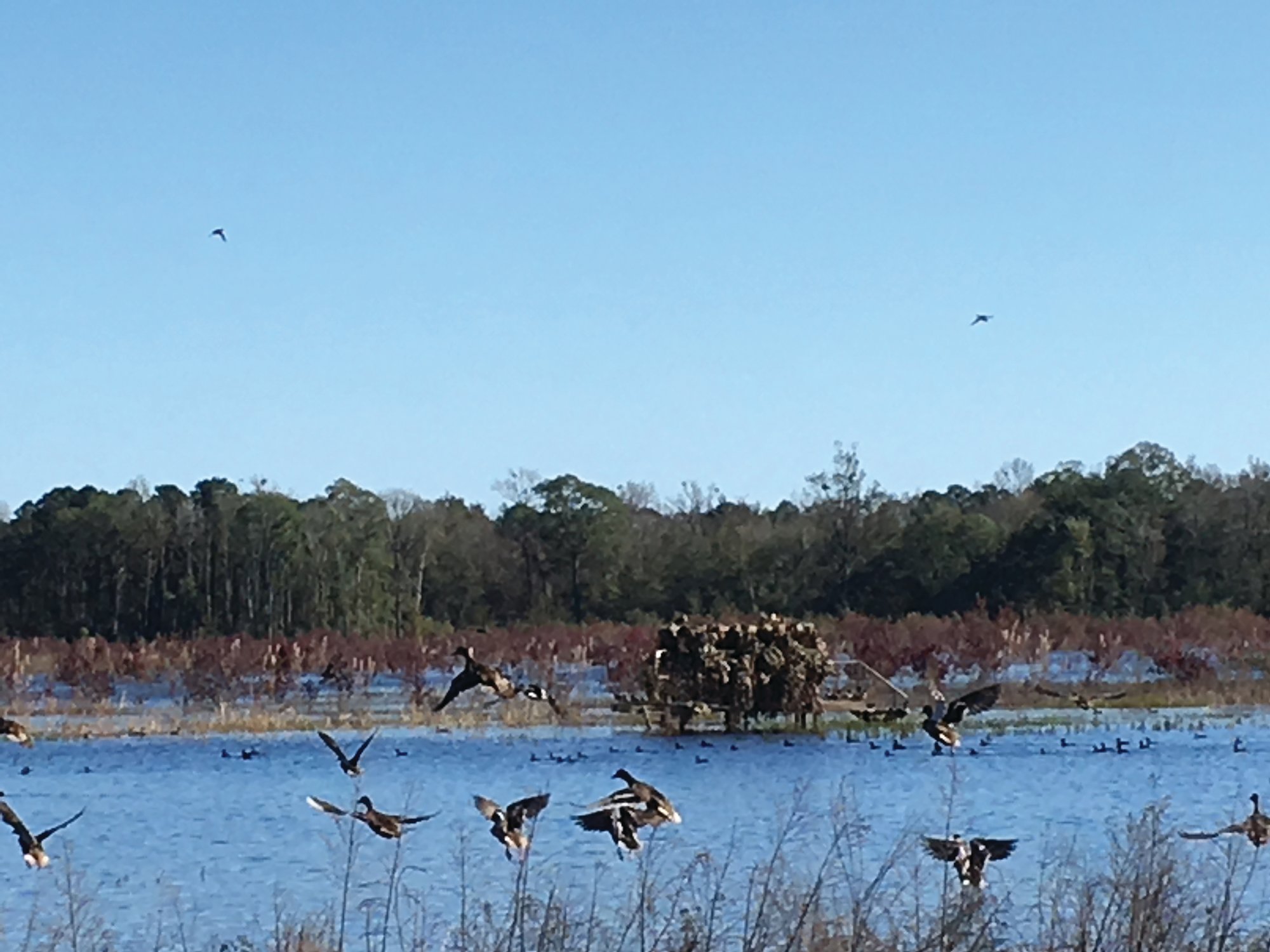Dan Geddings: Managing duck ponds
Outdoor columnist
It all started years ago when we were hunting Sparkleberry Swamp. The Santee Refuge held as many as 200,000 mallards at times, through the winter. Most flew out every day to feed on the lake and in the adjacent swamps. My friends and I had great hunts until we noticed that most of the ducks were over-flying the swamp, and we could hear the distant thud of guns well to the north.
We found out that there was a place just north of the confluence of the Wateree and Congaree rivers called Twin Lakes. It was a big farm that was growing corn and soybeans. The fields were either accidentally flooded by rains, or pumps were used to put water on the fields. Either way, they were getting all the ducks. The only shooting we got was when Twin Lakes was shot, then some of the ducks returned to the swamp to escape the barrage.
My brother-in-law, Johnny Harrington, and I, along with our hunting buddies, Jimmy Jackson, Cody Palmer and Dwight Beavers, decided we needed to get a duck pond somewhere around the lake if we were going to have any decent shooting. We looked at buying property and building our own pond but soon realized that the venture would probably be out of our price range comfort. The next alternative was to lease a place.
There was a small "shallow water pond" near Goat Island that was planted in corn and flooded for duck hunting. It was known as Fuzzy's Pond. I learned that there were a couple of other small ponds in the area, and they were not being used. We contacted the owners but had no luck. Then a friend of Jimmy's intervened and helped us get a lease on one of the ponds.
It was late in the year, and I was going through some personal turmoil, so I didn't get interested in the pond until the duck season ended that year. I drove down there one day and took a look at the pond. The pond was almost dry, and a dozen decoys were sitting out in the mud. The pond bordered the refuge, and I knew the ducks were still there and would be there for a couple of months before heading back north.
I walked down the dike and turned on the electric pump that pulled water from the lake, then went home. I returned a few days later with two 50-pound bags of shelled corn. The pond held about a foot of water now, and I waded out and spread the corn in the shallow water. A week later I returned and could hear the ducks before I got to the pond. There were hundreds on that two-acre pond. I waited that afternoon until they flew out, then spread two more bags of corn.
That night, I called Jimmy, and he was greatly surprised. He wanted to see it for himself, so we met the next morning and walked into the pond just after daylight. The water was covered with ducks, splashing and quacking, maybe thousands of them. It was an amazing sight. The ducks used our pond until they flew north in early March.
That summer, we got busy planting corn and building blinds. Everyone in our group wondered if the ducks would return. I knew they would, and they would bring their friends, I told them. At the time, I called it "imprinting" on a food source. The biologists nowadays call it site fidelity. Either way, they came back, and we enjoyed many years of unbelievable hunts. We outmanaged the refuge and shot limits of mallards, black ducks, teal, wood ducks and some pintails, wigeon and gadwalls but no divers.
During the next several years, we improved the road to the pond, made drainage improvements, put in a well, leveled the field to hold a 12-to-16-inch water depth, built blinds and made every effort to improve the overall management of the site, and the hunts. And even though we called the place our Secret Duck Pond, word got out about our success there, and we eventually lost the lease.
Other people with more resources started buying land and building duck ponds in the lake area. Most were novices about duck hunting and duck pond construction. But they inadvertently managed to attract diving ducks to the impoundments that were built too deep for mallards and other puddle ducks. Mallards were beginning to be short stopped north of us, and ringnecks were the diving ducks flocking to the new duck ponds.
A friend of mine has a duck pond under construction in the lake area. He knows firsthand of our earlier success, and I've been asked for some advice regarding the design and construction process. I look forward to contributing any knowledge, experience and management ideas that I might have to the venture.
Email Dan Geddings at cdgeddings@gmail.com.
More Articles to Read

